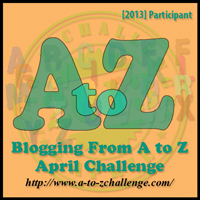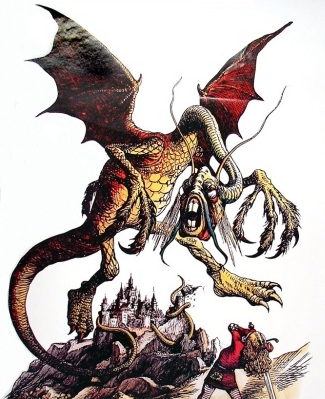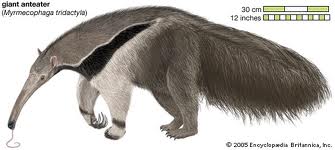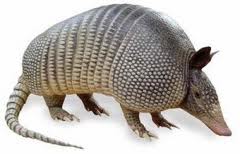 Today is Q-Day in the A to Z Challenge.
Today is Q-Day in the A to Z Challenge.
I had a quirky dream about prepositional phrases last night. No kidding.
I think it’s because I had intended to write about these preppie guys yesterday on P-Day. Unfortunately, my snarky button jammed, and I couldn’t think up anything clever to write about them. I bet you’d have trouble writing something clever about prepositional phrases, too. Admit it.
At any rate, Susie Q, my secret mentor, urged me to go back a day in time and reconsider those pesky prepositions and their phrases. At first I resisted, but as sleep further eluded me, a song I learned in third or fourth grade sixty alotta years go popped into my head: “Over the river and through the woods, to Grandmother’s house we go.” (See the three prepositional phrases in a row?)
That’s when I knew I had to get up and write my post.
Okay. So here it is. Snarky or not.
Prepositions and Prepositional Phrases
Prepositions are words that connect or form relationships with nouns, noun phrases, pronouns, and sometimes verbs in sentences. They fall in pre-position to, or before, nouns, noun phrases, and pronouns (Kolln, 1994). Eight prepositions (of, to, in, for, with, on, at, by) are among the twenty most frequently used words in English. Here are a bunch more prepositions:

Prepositions have been called a lot of names: the Big Daddy of Phrases (Rozakis, 2003), tasty morsels for the grammar gourmet (Michael Strumpf, 2004), and mushy abstractions and great circumlocutions (Hale, 1999), to name a few. June Casagrande (2010) calls them “devious” because they sometimes get plunked in the wrong place in the sentence causing humorous gaffes.
Constance Hale, in Sin and Syntax: How to Craft Wicked Effective Prose (1999), had this to say about prepositions:
In the hands of Charles Dodgson, Sr., [Lewis Carrol] [didn’t we just talk about him just a couple of days ago?] create mischief, what with cows rushing up chimneys and mayors in soup plates and men in teapots and donkeys in thimbles. Most writers, though, are content to use prepositions to ground their material, to tie noun and pronouns logically to other parts of speech. In this regard, prepositions are indispensable.
Form
Prepositions are groupies, not loners. They love company and crowds. In fact, they need company in order to function; otherwise they sit in the corner hanging their heads. Look around for some nouns, and you will find prepositions near by, hanging on for dear life. Rarely will you see a preposition hanging out by itself. (Well maybe on restroom doors!) That’s just no fun. Boring!
And worse than being groupies, prepositions are grabbers. They latch onto nouns and pronouns to justify their existence. Their job is to tell location, direction, time, and relationships in sentences. Here you can see how they grab nouns to help them. (We’ll talk about pronouns and prepositions another day.)

- Prepositions form phrases.
- Prepositional phrases begin with prepositions.
- The preposition in the phrase grabs an object: a noun or pronoun.
- Prepositions can be simple (one word: of, to, behind) or compound (two or more words: in back of, in addition to).
- Sentences may have one or more prepositional phrases.
Red Alert: Don’t be tricked: the noun that the preposition grabs is NOT the subject of the sentence! You can hear those preppies chortle when they catch you in that mistake.
Prepositions have another famous trick; they cozy up to verbs, you know, maybe to make the nouns and pronouns jealous. They like to “show off,” “object to,” “interfere with,” and “be shocked at” whatever is going on.
Let them have their fun. After all, if you were a preposition, wouldn’t you feel entitled to a little action now and then? Beats just sitting around with those boring do-nothing pronouns, doesn’t it?
Function of Prepositions
1. Prepositions are noun-stickers (Goode, 2002). Look at how these prepositions stick phrases into this song.
Over the river and through the woods, to Grandmother’s house we go.
The horse knows the way to carry the sleigh through white and drifted snow-oh.
Read these lyrics without prepositional phrases, and the song just doesn’t sound right or make sense.
Over the river and through the woods, to Grandmother’s house we go.
The horse knows the way to carry the sleigh through white and drifted snow-oh.
2. Prepositional phrases answer questions. Which one? When? Where? Which direction?
The answers to these questions enrich writing by adding specific details and depth to sentences and stories. They describe the setting and action and help readers form pictures in their minds.
3 Prepositions act like adjectives and adverbs. They are great pretenders. They are chameleons and change their colors depending on whether they want to act like adjectives or whether they want to be adverbs. Because people use prepositional phrases in speech all the time, they are hardly aware that they are using adjectival prepositional phrases or adverbial prepositional phrases. Maybe you don’t need to know whether the phrases are acting like adjectives or adverbs, but you do need to recognize these prepositional phrases in writing because they cause some common writing errors.
So what. Who cares?
Writers have a love-hate relationship with prepositional phrases. They love prepositions because they enrich writing and woo the reader, but prepositional phrases can cause problems. They might
- leave a sing-song lilt to the writing (example: “Over the river and through the woods, to Grandmother’s house we go”);
- lead you down the garden path to passive voice;
- lead to subject-verb agreement errors (remember that Red Alert above?);
- lead to wordiness, either with extra words or with extra phrases;
- cause ambiguity when the prepositional phrases land in the wrong spot in the sentence; and
- cause ambiguity when subtle differences between words change intended meanings.
I will write about these problems individually in future posts.
Finally, I will not write about that myth that lies about prepositions not ending sentences. It’s okay to end a sentence with a preposition if otherwise the sentence would sound odd. But so many grammarian reformers, satirists, and critics have already written about that, that I won’t expound on it any further. That okay with you? Besides, Roy Peter Clark (2006) will call you a crotchety critic and one other rather disparaging epithet (that I won’t print here) if you bring up that subject again. Enough said.
And do you think I could type this whole post without misspelling preposition each time? Nah. Each time I typed preposition I got that cute red squiggly underlining to nag me to fix the spelling. Okay, I did.
References:
Casagrande, June. It Was the Best of Sentences, It Was the Worst of Sentences. Berkeley: Ten Speed Press, 2010.
Clark, Roy Peter. Writing Tools: 50 Essential Strategies for Every Writer. New York: Little, Brown, 2006.
Goode, C. Edward. A Grammar Book for You and I (Oops Me!). Sterling, VA: Capital, 2002.
Hale, Constance. Sin and Syntax: How to Craft Wickedly Effective Prose. New York: Broadway, 1999.
Kolln, Martha. Understanding English Grammar, 4th ed. New York: MacMillan, 1994.
Rozakis, Laurie. The Complete Idiot’s Guide to Grammar and Style. New York: Alpha, 2003.
Strumpf, Michael and Douglas, Auriel. The Grammar Bible. New York: Holt,2004.
A to Z Blogging Challenge Post Q. Find a list of all my 2013 A to Z Challenge posts here.
The Last Meow
All this yammering about prepositions is boring and definitely not spine-tingling excitement. I’d rather sleep on a cactus than pay attention to this stuff. Better yet, maybe a nice nap on a sunny windowsill. Hmmmm. Yes. That sounds about right.
=(^;^)= Meow for now.

Posted in
A to Z Challenge,
English Class,
ESOL,
Grammar,
Grammar-You-Can-See and tagged
#atozchallenge,
#ESOL,
grammar,
grammar you can see,
objects of prepositions,
prepositional phrases,
prepositions,
prepositions and prepositional phrases


 Oh Heck! Another Writing Quirk, theme for the amazing 2014 A to Z Challenge, suggests ways to improve our writing by avoiding and/or eliminating troublesome bug-a-boos that cramp our writing style.
Oh Heck! Another Writing Quirk, theme for the amazing 2014 A to Z Challenge, suggests ways to improve our writing by avoiding and/or eliminating troublesome bug-a-boos that cramp our writing style.


































